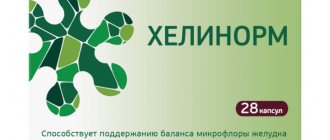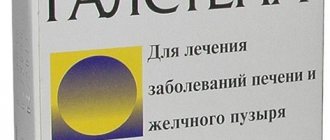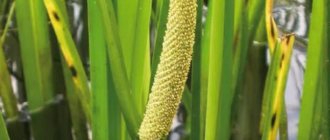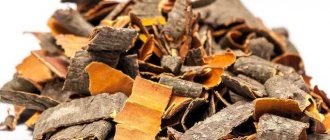) and drugs of other chemical groups
(pyrantel pamoate, diethylcarbamazine, niclosamide, praziquantel, ivermectin).
Chemical properties
Praziquantel is a broad-spectrum anthelmintic drug that is included in the list of essential and vital drugs. The medicine is effective against adult tapeworms, their larvae and digenetic flukes.
Molecular mass of the product = 312.4 grams per mole. The substance is synthesized as a bitter white crystalline powder that is highly soluble in dimethyl sulfoxide , ethanol and chloroform . The compound is hygroscopic and poorly soluble in water.
Preparations based on this substance are produced in the form of regular tablets or film-coated tablets.
Pharmacodynamics and pharmacokinetics
The medicine significantly increases the ability of semi-permeable cell membranes of parasites ( helminths ) to allow calcium ions to pass through. As a result, a generalized muscle contraction occurs, turning into persistent paralysis, then the helminths die. Also, under the influence of the drug, vacuolization and serious damage to the epithelial tissue of the worm’s body occurs. This leads to increased vulnerability of the parasite, its destruction by the human immune system and destruction of the shell under the action of digestive enzymes.
Despite the fact that the drug has low bioavailability, after taking the tablets the active substance is completely and quickly absorbed by the body. The maximum concentration in the blood is achieved within 60-180 minutes. The degree of binding to plasma proteins is up to 80%. The drug is metabolized in the liver, resulting in the formation of inactive poly- and monohydroxylated metabolites.
The half-life ranges from 0.8 to 1.5 hours for Praziquantel and up to 6 hours for its inactive metabolites. The medicine is excreted through the kidneys, a small part of it is excreted in the feces.
Pharmacological properties of the drug Praziquantel
Highly effective anthelmintic agent. The mechanism of action of praziquantel is associated with an increase in the permeability of the cell membranes of parasites for calcium ions, which causes muscle contraction of the parasites, turning into spastic paralysis. Active against Clonorchis sinensis (Chinese fluke), Metagonimus yokogawai, Opistorchis felineus (cat fluke or Siberian fluke), Opistorchis viverrini (Civet fluke), Paragonimus westermani (pulmonary fluke), Fasciola gigantica (giant fluke), Fascilopsis buski, Schistosoma haematobium, Schistosoma intercalatum, Schistosoma japonicum (Japanese schistosome), Hymenolepis nana (dwarf tapeworm), Diphyllobothrium latum (wide tapeworm), Taeniaryhynchus saginatus (ox tapeworm), Taenia solium (pork tapeworm) and its larvae. Rapidly absorbed when taken orally. The maximum concentration in blood plasma is reached after 1–2 hours. It is quickly metabolized. It is excreted by the kidneys mainly (80%) in the form of metabolites within 4 days, with 90% of the administered dose in the first 24 hours. A small amount passes into breast milk. In patients with impaired renal function, the elimination of praziquantel from the body may be delayed.
Indications for use
Praziquantel is prescribed:
- for schistosomiasis (intestinal and genitourinary system);
- for the treatment of intestinal cestodosis taeniasis , hymenolepiasis , teniarynchosis , diphyllobothriasis );
- for trematodes ( clonorchiasis , metagonimiasis , opisthorchiasis , paragonimiasis , fasciolopsidosis , etc.);
- patients with neurocysticercosis .
Contraindications
The medicine is not used:
- for the treatment of ocular cysticercosis ;
- if you are allergic to the active ingredient;
- in combination with Rifampicin .
The drug is prescribed with caution:
- children under 4 years old;
- with liver failure, including cysticercosis of the liver ;
- women in the 1st trimester of pregnancy;
- while breastfeeding.
Special instructions for the use of Praziquantel
Should be used with caution in patients with liver disease. Prescribed with caution in the 2nd and 3rd trimester of pregnancy. During breastfeeding, breastfeeding should be interrupted for 48 hours after the last dose of praziquantel. Not recommended for use in children under 2 years of age. During treatment, patients should refrain from engaging in potentially hazardous activities that require increased attention and speed of physical and mental reactions.
Side effects
Adverse reactions that occur during treatment with the drug may develop under the influence of the active substance, infection, or as a result of the body’s reaction to the death of helminths. Determining the exact cause is usually difficult.
During treatment with Praziquantel the following are observed:
- pain in the abdomen, vomiting, diarrhea , nausea, loss of appetite;
- fever , myalgia , asthenia ;
- headaches, drowsiness , increased seizure activity and dizziness;
- allergic reactions of a local nature ( urticaria , skin rashes), polyserositis (rarely);
- treatment of neurocysticercosis - meningism , increased intracranial pressure , thinking disorders, hyperthermia ;
- increased levels of liver enzymes (rare).
Praziquantel, instructions for use (Method and dosage)
The daily dosage, regimen and duration of treatment depend on the pathogen and dosage form.
According to the instructions for Praziquantel, tablets are taken orally. If they are enteric coated, they cannot be separated or chewed. The tablets are swallowed whole before or during meals, washed down with a small amount of water.
If the medicine is recommended to be taken once a day, it is better to take it during dinner. The interval between doses should be from 4 to 6 hours.
Praziquantel, instructions for use
As a rule, 40 mg of the substance is prescribed per kg of the patient’s weight per day, in one dose or divided into 2 doses. It is enough to take the medicine for one day.
If the disease is caused by Schistosoma japonicum or Schistosoma mekongi, then take 60 mg per kg of the patient's weight per day. The daily dose can be divided into 2 doses. The course of treatment is 1 day.
To eliminate Clonorchis sinensis, Opisthorchis viverrini and Paragonimus westermani (including other types of helminths), 25 mg per kg of body weight is prescribed, 3 times a day. The duration of treatment is from 1 to 3 days.
Praziquantel
Praziquantel
(Latin
praziquantelum
, English
praziquantel
) is an anthelmintic drug, active mainly against flatworms: trematodes and cestodes.
Praziquantel is a chemical compound
Praziquantel is a white crystalline powder with a bitter taste. Soluble in ethanol and very slightly soluble in water. Chemical name: (RS)-2-(cyclohexylcarbonyl)-1,2,3,6,7,11b-hexahydro-4H-pyrazino-[2,1-a]-isoquinolin-4-one. Gross formula: C19H24N2O2. Molecular weight 312.4 g/mol.
Praziquantel is a drug
According to the pharmacological index, praziquantel belongs to the group of “anthelmintics”. According to ATC, praziquantel is included in the group “P02 Anthelmintic drugs”, subgroup “P02B Drugs for the treatment of trematodiasis” and has the code P02BA01.
Indications for use of praziquantel
Praziquantel is indicated for:
- trematodes:
- opisthorchiasis caused by Opisthorchis felineus
or
Opisthorchis viverrini - clonorchiasis caused by Clonorchis sinensis
- Schistosomiasis caused by various types of schistosomes, including:
- intestinal schistosomiasis caused by Schistosoma mansoni, Schistosoma japonicum, Schistosoma mekongi, Schistosoma intercalatum
- genitourinary schistosomiasis caused by Schistosoma haematobium
, etc.
and
Heterophyes nocens
- Hymenolepiasis caused by Hymenolepis nana
- diphyllobothriasis caused by Diphyllobothrium latum, Diphyllobothrium dendriticum
and
Diphyllobothrium klebanovskii - Taeniarynchosis caused by Taenia saginata
- taeniasis caused by Taenia solium
How to take praziquantel and dosage
The dose and order of administration of praziquantel depend on the type of helminth. A single dose is prescribed on the basis of 10 to 50 mg of praziquantel per kg of patient weight. WHO (Fact Sheet No. 368) recommends the following doses of praziquantel:
- for opisthorchiasis and clonorchiasis: 25 mg per kg of patient weight three times a day for 2-3 consecutive days
- for paragonimiasis: 25 mg per kg of patient weight three times a day for three days
For other diseases (Bronshtein A.M., Malyshev N.A.):
- for metagonimiasis, nanophyetosis, heterophyosis, fasciolopsidosis, echinochasmosis - praziquantel in a single daily dose of 20 mg/kg body weight per day
- for schistosomiasis - praziquantel at a dose of 75 mg per 1 kg of patient's body weight per day in 3 doses with an interval of 6 hours for 1 day
- for teniarhynchosis and taeniasis - praziquantel once at a dose of 25 mg per 1 kg of patient body weight per day
Use of praziquantel during pregnancy, breastfeeding and children
Treatment of pregnant women with praziquantel in the 2nd and 3rd trimesters of pregnancy is allowed if the expected effect of treatment outweighs the potential risk to the fetus and child.
Praziquantel is not recommended in the 1st trimester of pregnancy. The FDA category of risk for the fetus when a pregnant woman takes praziquantel is B (animal studies have not revealed the risk of negative effects of praziquantel on the fetus; there have been no adequate studies in pregnant women). If use is necessary during lactation, it is recommended to interrupt breastfeeding on the day of taking praziquantel and for the next three days.
Praziquantel is contraindicated in children under 4 years of age.
Trade names of drugs containing the active ingredient praziquantel
In Russia, only one drug with the active substance praziquantel is registered: Biltricide.
US brand name for praziquantel: Biltricide.
Contraindications to the use of praziquantel
Praziquantel is contraindicated in:
- cysticercosis of the eye
- liver cysticercosis
- breastfeeding
- 1st trimester of pregnancy
- under four years of age
- liver failure
- hypersensitivity to praziquantel
Side effects of praziquantel
The following side effects are possible during praziquantel therapy: abdominal pain, nausea, vomiting, headache, dizziness, drowsiness, myalgia, fever, skin rashes.
With neurocysticercosis: meningism, thinking disorders, increased intracranial pressure, hyperthermia.
general information
Praziquantel is a prescription drug.
After taking praziquantel for 24 hours, driving and performing hazardous work is not recommended.
Medical publications addressing the use of praziquantel in the treatment of helminthiasis
- Trematode infections of food origin. WHO Fact Sheet No. 368. April 2014
- Schistosomiasis. WHO Fact Sheet No. 115. May 2015
On the website in the Literature section there is a subsection “Parasitic and infectious diseases of the gastrointestinal tract”, containing articles that touch upon, among other things, the treatment of helminth infections.
Praziquantel has contraindications, side effects and application features; consultation with a specialist is necessary.
Back to section
Interaction
It is not recommended to take the medicine with grapefruit juice or drinks containing it. This can lead to an increase in the maximum plasma concentration of the substance by 1.6 times and an increase in AUC by 1.9 times.
The combination of Praziquantel with Rifampicin , since the latter is a very strong inducer of the cytochrome P450 enzyme . It is recommended to prescribe alternative drugs for the treatment of helminthiasis . If urgently needed, Rifampicin should be discontinued 28 days before using the anthelmintic. You can start taking the antibiotic the very next day after stopping treatment with Praziquantel.
Inducers of the P450 enzyme ( phenytoin, carbamazepine, phenobarbital , other antiepileptic drugs, Dexamethasone ) lead to a decrease in the concentration of this substance in the blood.
The combined use of the drug with chloroquine reduces its plasma concentration and effectiveness.
Cytochrome P450 enzyme inhibitors ( Ketoconazole, Erythromycin, Cimetidine, Itraconazole ) increase its effectiveness and maximum concentration in the blood.
Analogs
The following drugs are structural analogues of Praziquantel:
- Azinox;
- Pikwiton;
- Droncite;
- Cystricide;
- Cestox;
- Cesol;
- Biltricide.
They are based on the same active substance, which means the effect of use will be identical. But what products have a similar effect based on other substances:
- Antimonyl sodium tartrate;
- Ditrazine citrate;
- Nemozol;
- Chloxyl.
Important! When prescribing a drug, the attending physician should clarify in advance what means it can be replaced if necessary. It is not recommended to change the doctor's prescription on your own.











